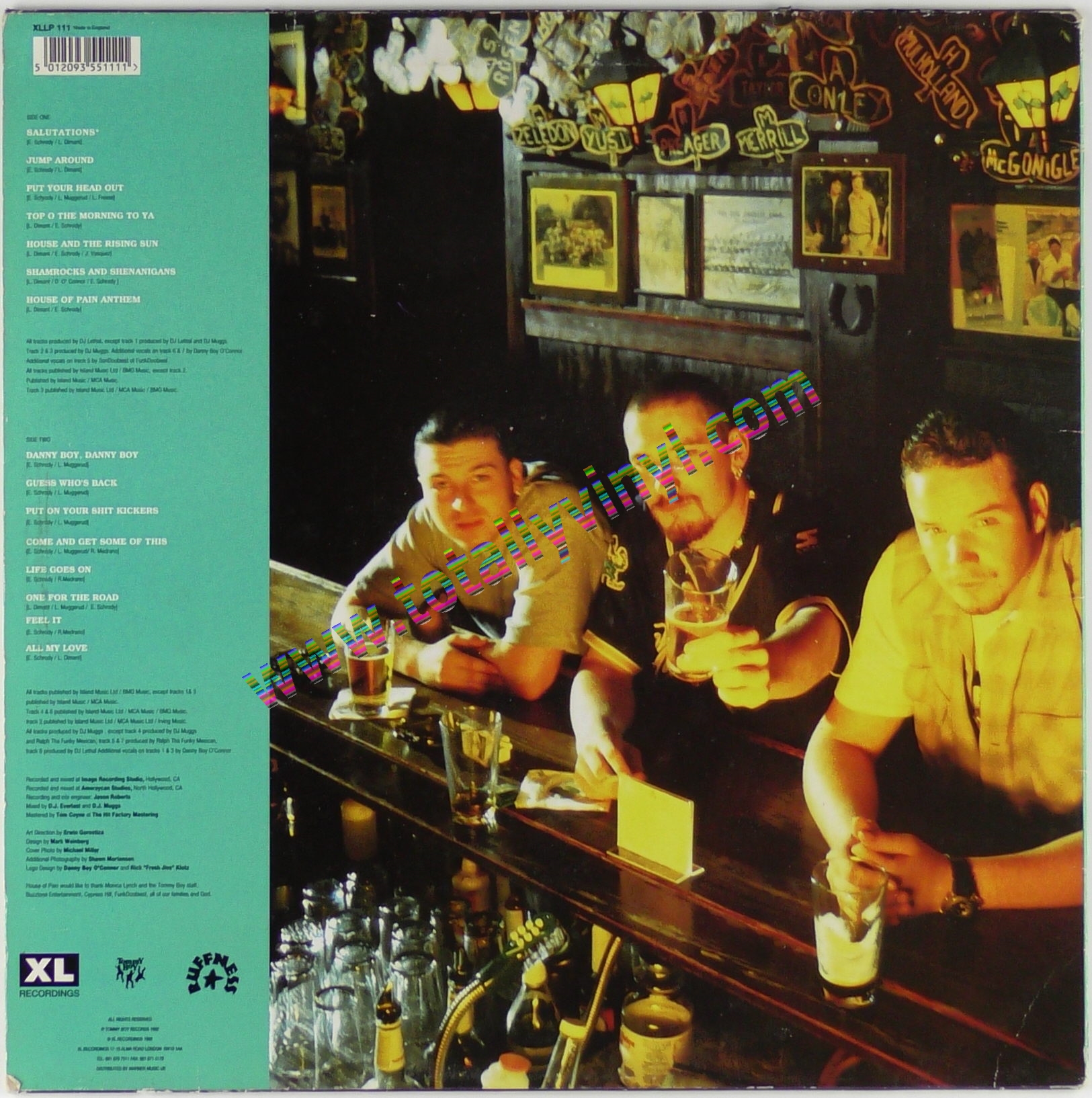Table Of Content

Starting with the simple yet evocative lines, “A little past supper-time…sitting on my behind, Waiting for you,” we’re immediately transported into the world of a young child, full of hope yet tinged with confusion. The porch step isn’t just a physical space; it symbolizes the threshold of hope and disappointment. With Bernie Taupin, Martin co-wrote the #1 hits "We Built This City" and "These Dreams." After writing the Pretty Woman song for Go West, he had his own hit with "In the House of Stone and Light."
Are there any live performances of “House of Pain” worth watching?
The emotional depth of ‘House of Pain’ suggests it’s drawn from a well of personal experience or close observation. The writer, in crafting these lyrics, likely delved into the depths of their own experiences or empathized deeply with someone who had. At this point in their life, they might have been reflecting on their own past, dealing with unresolved feelings of abandonment or loss. The lyrics of House of Pain evoke a sense of rebellion, frustration, and longing for escape from the hardships of life. The song portrays a sense of disillusionment and the desire to break free from the constraints of society. It reflects the band’s own experiences and emotions, as they navigated the tumultuous landscape of the music industry in the late 1980s.
How did House of Pain impact Faster Pussycat’s career?
In the United States, "Jump Around" peaked at number three on the Billboard Hot 100, while reaching number five on the Billboard Hot Rap Songs chart and number 17 on the Billboard Billboard Dance Club Songs chart. In Canada, the single hit number seven on the RPM Dance/Urban chart and number 45 on the RPM Top Singles chart. In Europe, it entered the top 10 in Ireland, the Netherlands and the United Kingdom.
Weekly charts

A boy needs a daddy like a dance to mime,” the song touches the core of self-worth issues stemming from parental neglect. It highlights a universal truth – the deep-seated need for parental guidance and approval. Ever wondered what it’s like to walk in the shoes of someone haunted by the ghost of abandonment?
The lyrics of “House of Pain” explore the metaphorical concept of life as a tumultuous journey filled with obstacles and challenges. It presents the idea that pain and suffering are inevitable aspects of the human experience, but they also serve as catalysts for growth and transformation. The “house” mentioned in the song symbolizes the inner struggles and hardships faced by individuals as they navigate through life’s ups and downs. House of Pain, along with the success of Faster Pussycat, played a significant role in shaping the music industry in the late 1980s. It showcased the power of glam metal music and highlighted the genre’s ability to connect with audiences on a deep emotional level. The song’s impact can be felt in the continued popularity of glam metal music and its influence on subsequent rock acts.
It was a breakthrough moment for Faster Pussycat and greatly contributed to their overall success. House of Pain by The Notorious B.I.G., also known as Biggie Smalls or Biggie, is a powerful rap song that delves into the harsh realities of street life and the struggles faced by those living in poverty-stricken neighborhoods. The song features thought-provoking lyrics that paint a vivid picture of the violence and hardships endured by individuals in these communities. House of Pain is an Irish American hip hop group who released three albums in the 1990s before lead rapper Everlast left to pursue his solo career. The group broke up in 1996 but reformed in 2010 as House of Pain, after the trio had been members of super group La Coka Nostra for several years.
House of Pain :: Same as It Ever Was – RapReviews - RapReviews
House of Pain :: Same as It Ever Was – RapReviews.
Posted: Tue, 09 Aug 2022 07:00:00 GMT [source]
Genius is the world’s biggest collection of song lyrics and musical knowledge
"Jump Around" is a song by American hip hop group House of Pain, produced by DJ Muggs of Cypress Hill, who has also covered the song, and was released in May 1992 as the first single from their debut album, House of Pain (1992). A 1993 re-release of the song in the United Kingdom, where the initial release had been a minor hit, peaked at number eight. It was released in 1994 through Tommy Boy Records as the lead single from their second studio album Same as It Ever Was. It is the only song to ever feature a rap verse from all the three members of the group. House of Pain catapulted Faster Pussycat into the mainstream music scene, gaining them significant recognition and a dedicated fan base. The song achieved commercial success, reaching the top of the charts and solidifying the band’s position as one of the leading acts in the glam metal genre.
What's That Sound? The mystery squeal in 'Jump Around' - Far Out Magazine
What's That Sound? The mystery squeal in 'Jump Around'.
Posted: Sun, 22 Aug 2021 07:00:00 GMT [source]
How does “House of Pain” resonate with listeners today?
It’s about the pain and confusion of a child, growing into adulthood, grappling with a father’s absence. The song serves as a poignant narrative of neglect and the resulting emotional turmoil. It’s clear the songwriter channels personal experiences or closely observed ones, aiming to articulate the deep-seated feelings of loss and the impact of parental absence.
Personal Reflections
While “House of Pain” was not released as a single, it still gained significant popularity among Van Halen fans. The song resonated with audiences and became a fan favorite during live performances. Van Halen’s “House of Pain” also conveys a message of empowerment and the importance of perseverance. It encourages listeners to embrace their pain and challenges, using them as motivation to strive for personal growth and liberation. The song reminds us that setbacks and hardships are not roadblocks, but rather stepping stones towards achieving our true potential. House of Pain by The Notorious B.I.G. is a profound song that addresses the harsh realities of street life and the struggles faced by individuals living in poverty-stricken neighborhoods.
” it becomes evident that this is a narrative of a child abandoned by his father. Joanna holds a BSc in English Literature and uses her expertise in literary analysis to uncover the deeper meaning of her favorite songs. House of Pain reunited at a private event held by UFC president Dana White in Boston on St. Patrick's Day 2009. It was officially announced on August 10, 2010, that House of Pain had reunited and performed their first "official" show in a decade at the second annual Epicenter music festival in Fontana, California, on September 25, 2010. The energetic music and powerful vocals contribute to an empowering and uplifting atmosphere.
It resonates with individuals who feel confined by societal norms and seek liberation from the daily struggles of life. The lyrics suggest that sometimes one must face their pain and frustrations head-on, finding solace and release in music and embracing their own personal journey towards freedom and self-expression. While “House of Pain” was not released as a single, it solidified Van Halen’s status as one of the leading rock bands of their time. The song showcased their musical prowess and contributed to their overall success and foundation of a dedicated fan base. The Notorious B.I.G. used his music as a platform to shed light on the struggles faced by individuals in marginalized communities. The rawness and honesty of his lyrics continue to resonate with listeners, evoking emotions and provoking thought.
The house of pain is not just a home devoid of physical presence; it’s a metaphor for the emotional void left by the father. While “House of Pain” has not been widely covered by other artists, it remains a beloved song among Van Halen fans and continues to be performed by various tribute bands. Its energetic and anthemic nature garnered praise for its memorable hooks and powerful performances. Listening to this song opens up conversations about the need for social change and highlights the importance of empathy and understanding. It serves as a reminder that behind the catchy beats and powerful rhymes, there is a deeper message that deserves attention. The imagery created by the lyrics paints a vivid picture of the harsh reality faced by individuals who are caught in this cycle.
In Oceania, the single peaked at number 15 in Australia and number 31 in New Zealand. The opening lines of the song, “The motherfuckin’ dust kicker, who can you trust? ” address the lack of trust and the constant fear of betrayal that permeate these communities. It speaks volumes about the desperation and mistrust that result from living in a world filled with violence. DJ Lethal joined Limp Bizkit and Everlast went solo, going multiplatinum yet again on the acoustic/rap hybrid, Whitey Ford Sings The Blues.

No comments:
Post a Comment